This article may contain affiliate links, please read my affiliate disclosure for more information
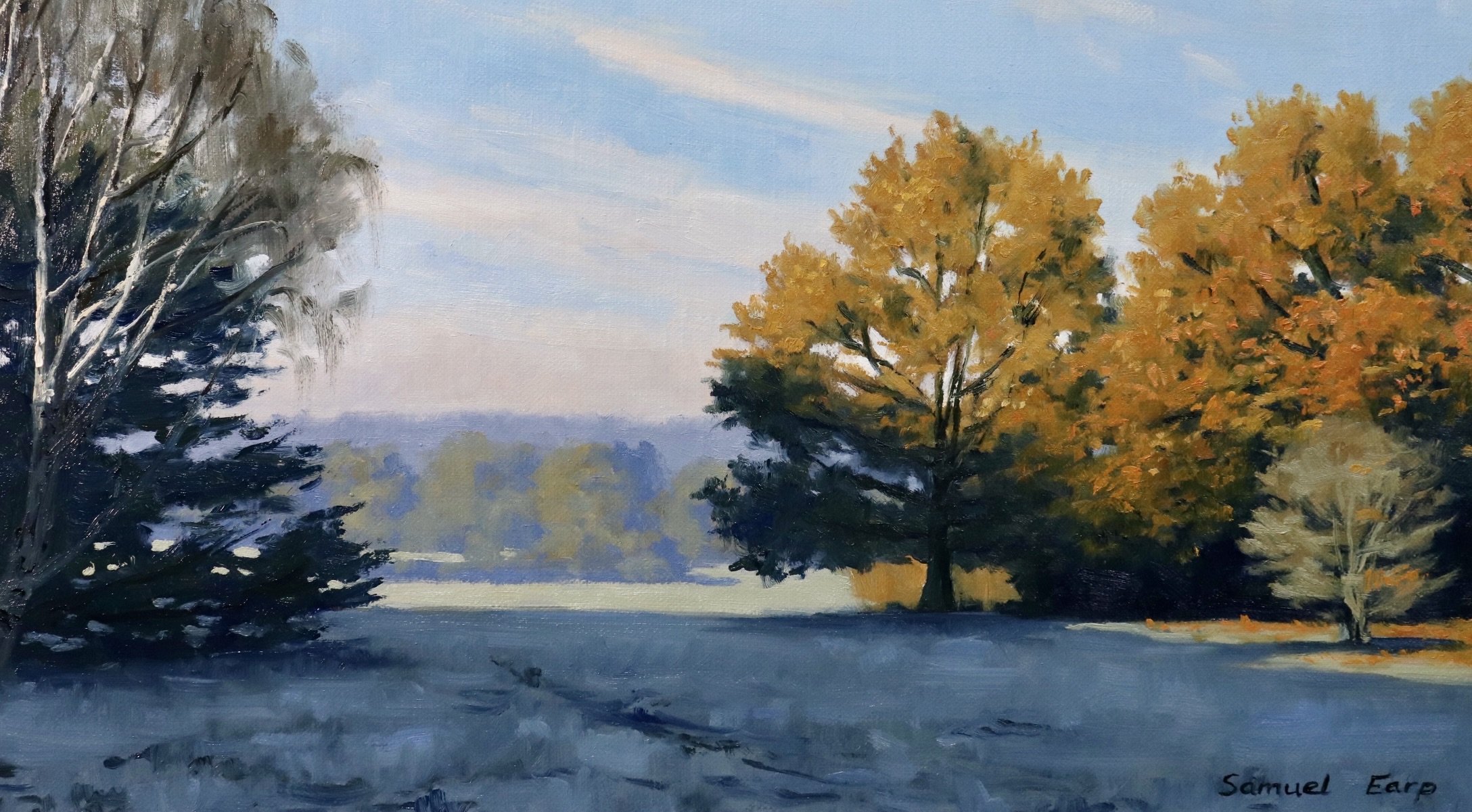
In this painting demonstration I show you how to paint a landscape that features a frosty autumn morning with rusty English oak trees and frost covered fields.
Suitable for oils and acrylics.
Reference Photo
Here is the reference photo I took and used in this painting. Please feel free to use or copy this photo if you would like to have a go at painting this art work. Also check out the painting tutorial video where I demonstrate how to paint this art work from start to finish.
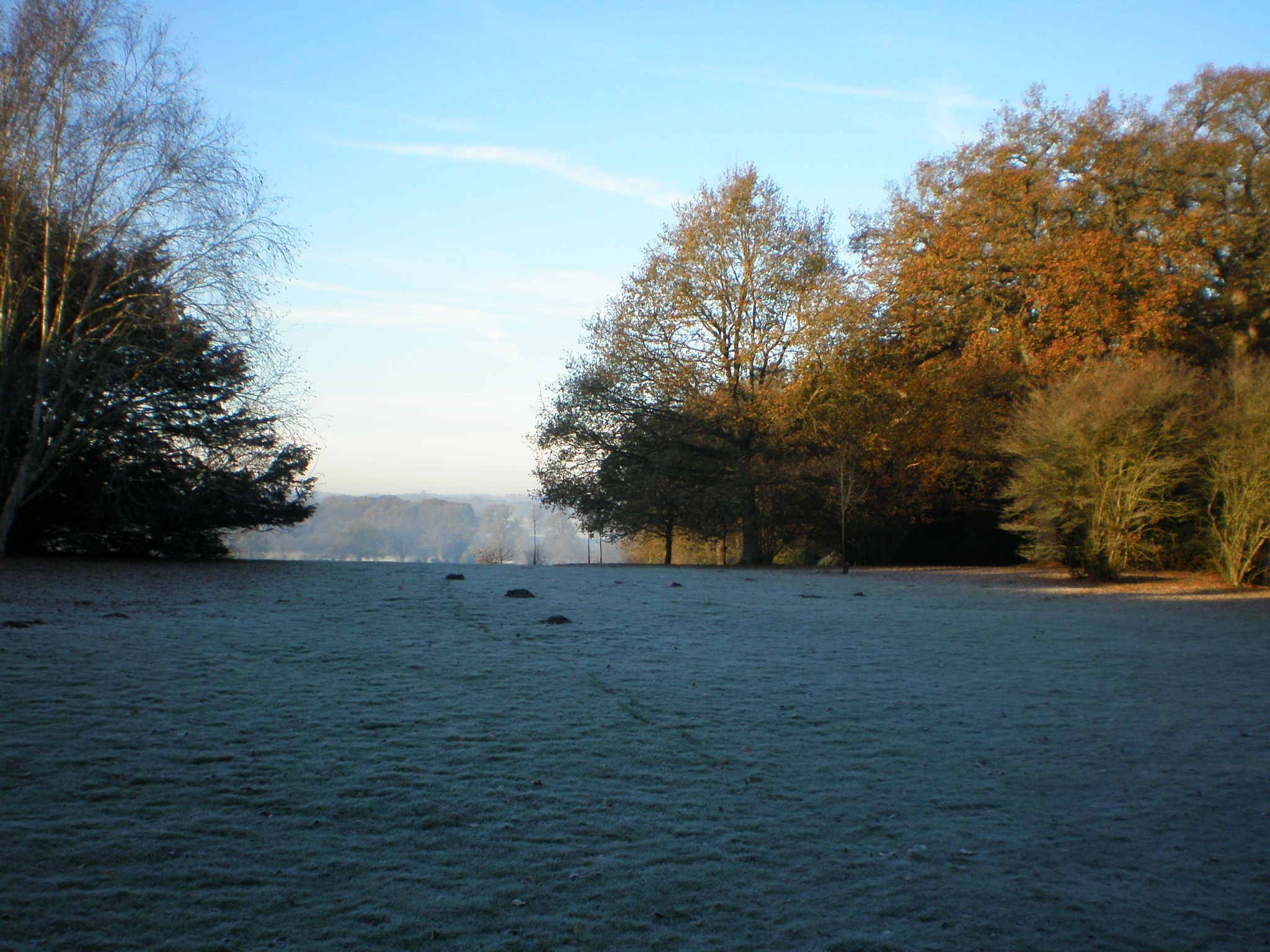
Colour Study and Composition
Before I start a painting I always do some prior planning to design the composition first. This can be as simple as a couple of quick pencil sketches or a colour study such as the one below. Planning and designing the composition will help you to give you an idea of what your painting might look like and it will reduce the chances of you running into trouble mid way through a final painting.
This composition is simple, the trees form an opening to the fields in the distance. This composition implies rhythm.
ART TIP
Never have your main focal area in the middle of the painting as it spoils the composition and forms a displeasing static. You will see the opening in the trees is to the left of centre and it is creating some space in the composition.
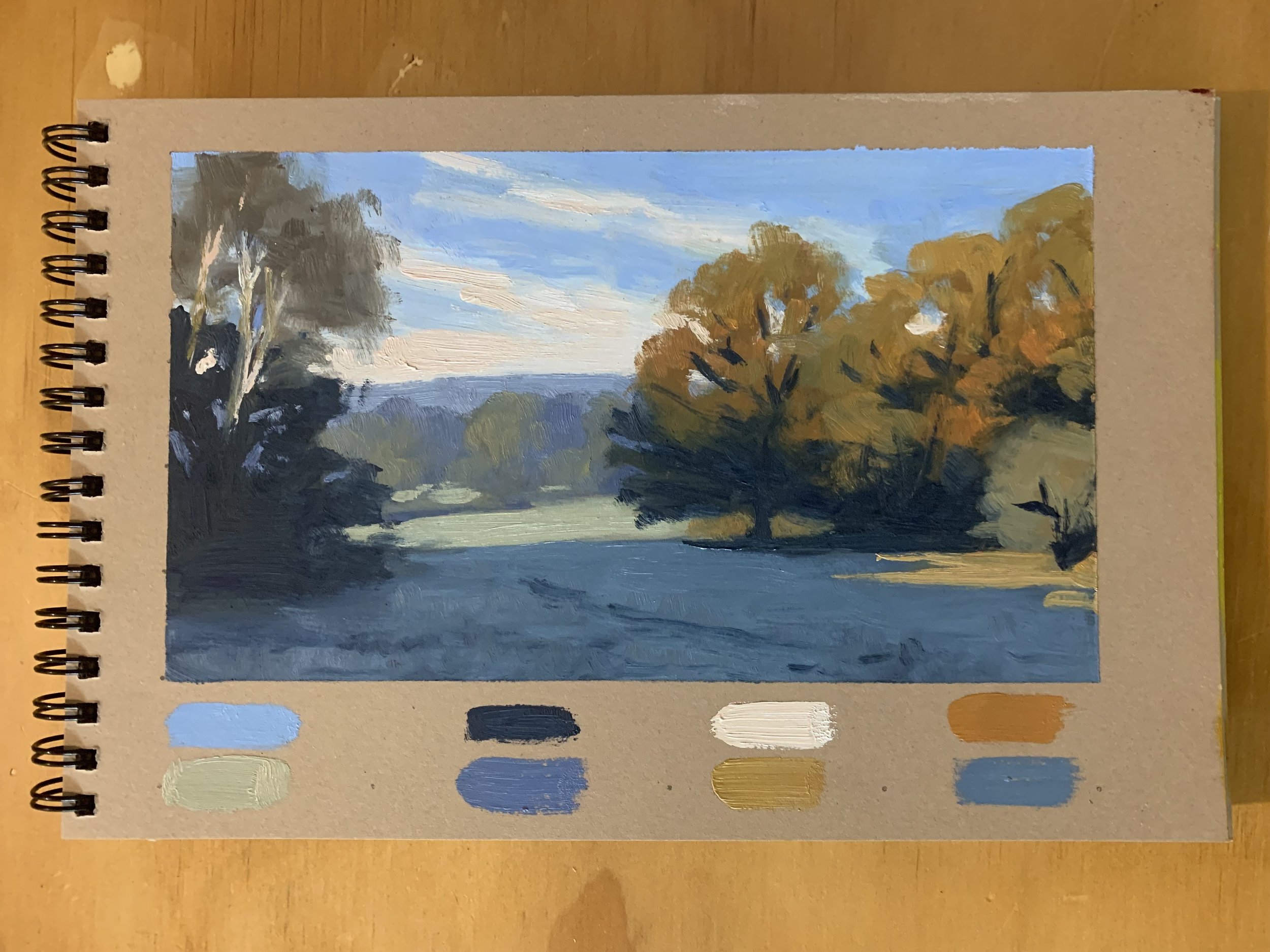
Colours
I painted this artwork using oil paint, and the colours I used in this particular painting are as follows:
- Titanium white
- Burnt sienna
- Yellow ochre
- Cadmium yellow
- Cadmium red light
- Alizarin crimson
- Ultramarine blue
- Phthalo green
Brushes
Here is a list of the brushes I used in this painting:
- No.5 flat
- No.3 flat
- No.2 flat
- No.3 filbert
- No.1 round
- No.0 round
- 1/4” ivory dagger
Painting Demonstration
Stage 1 – Blocking-In The Painting
I painted this art work on oil primed, medium weave Belgian linen and the painting itself measures approximately 22cm x 40cm.
I sketched the composition using a No.1 round brush with burnt sienna mixed with Liquin Original (Liquin). I am using Liquin as a medium to thin the paint and it also has the advantage of speeding up the drying time.
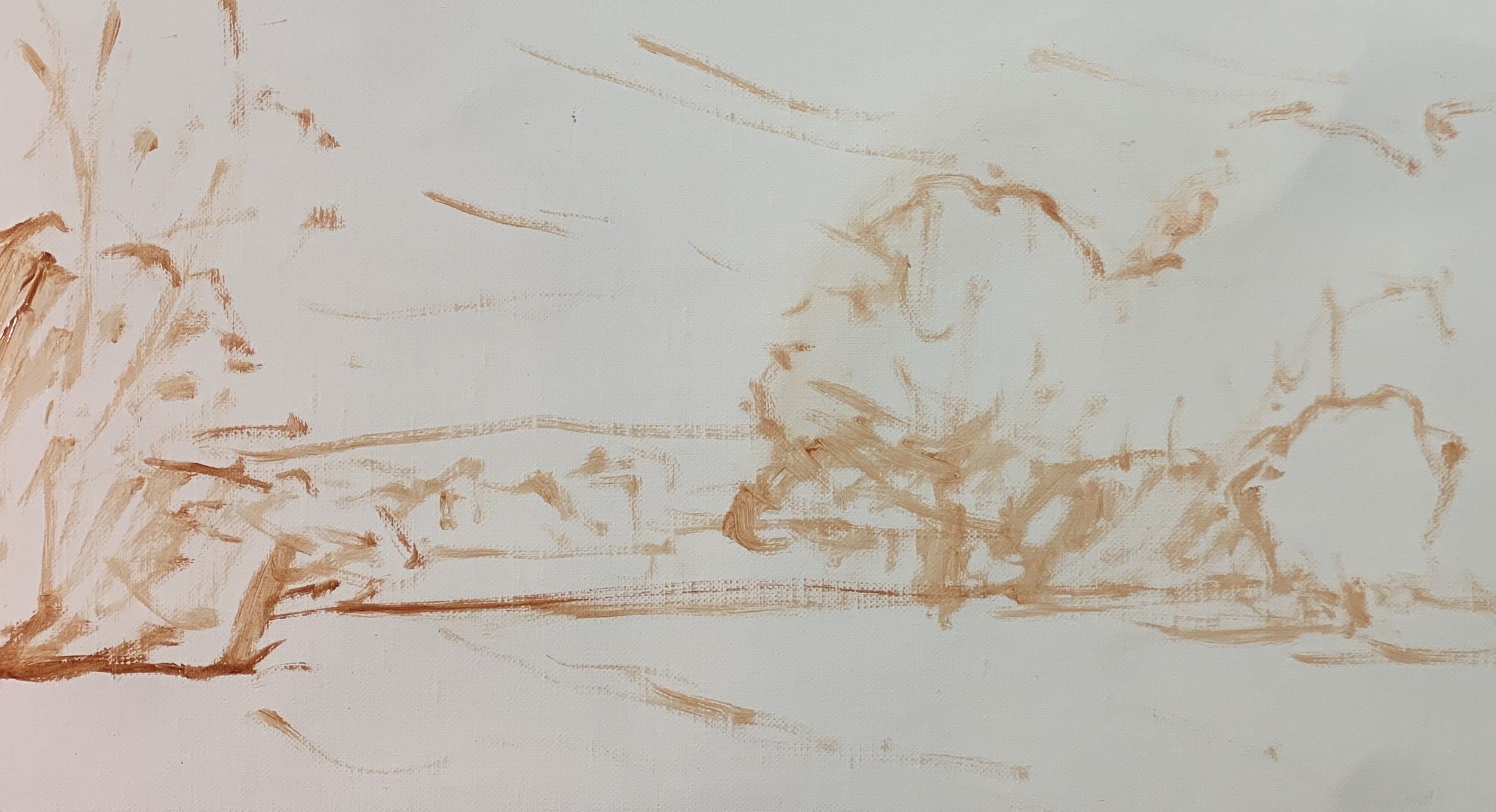
Paint Your Dark Values and Shadows First
Whenever I start a painting I always identify where the dark values and shadows are first in the scene I am painting. Value refers to how light or dark a subject is and by painting in the dark values first I personally find it is much easier to create atmospheric perspective my paintings. It also makes it easier to add the areas in light and to get the saturation of your colours correct once you have painted your dark values.
The darkest values are in the trees and for this I used a mix of ultramarine blue and yellow ochre. For the birch tree on the left I also mixed in a little burnt sienna and titanium white.
For the frosty grass I used a mix of ultramarine blue, yellow ochre and titanium white. I keep in mind that the grass is in shadow and that grass is usually a lot lighter in value than trees.
The tree shadows and distant hills are a mix of ultramarine blue, burnt sienna, titanium white and a little alizarin crimson.


As I am blocking-in the painting I am using No.5 flat brushes to get in some loose gestural marks. I paint the areas of the tree canopies of the English oaks that are in light. I use a mix of yellow ochre, burnt sienna, titanium white and a little ultramarine blue to desaturate. I have used these colours in the tree shadows and grass so it ties these zones together and helps to create colour harmony.
I add a few rusty red tones in the tree canopies by mixing in a little cadmium yellow and cadmium red light.
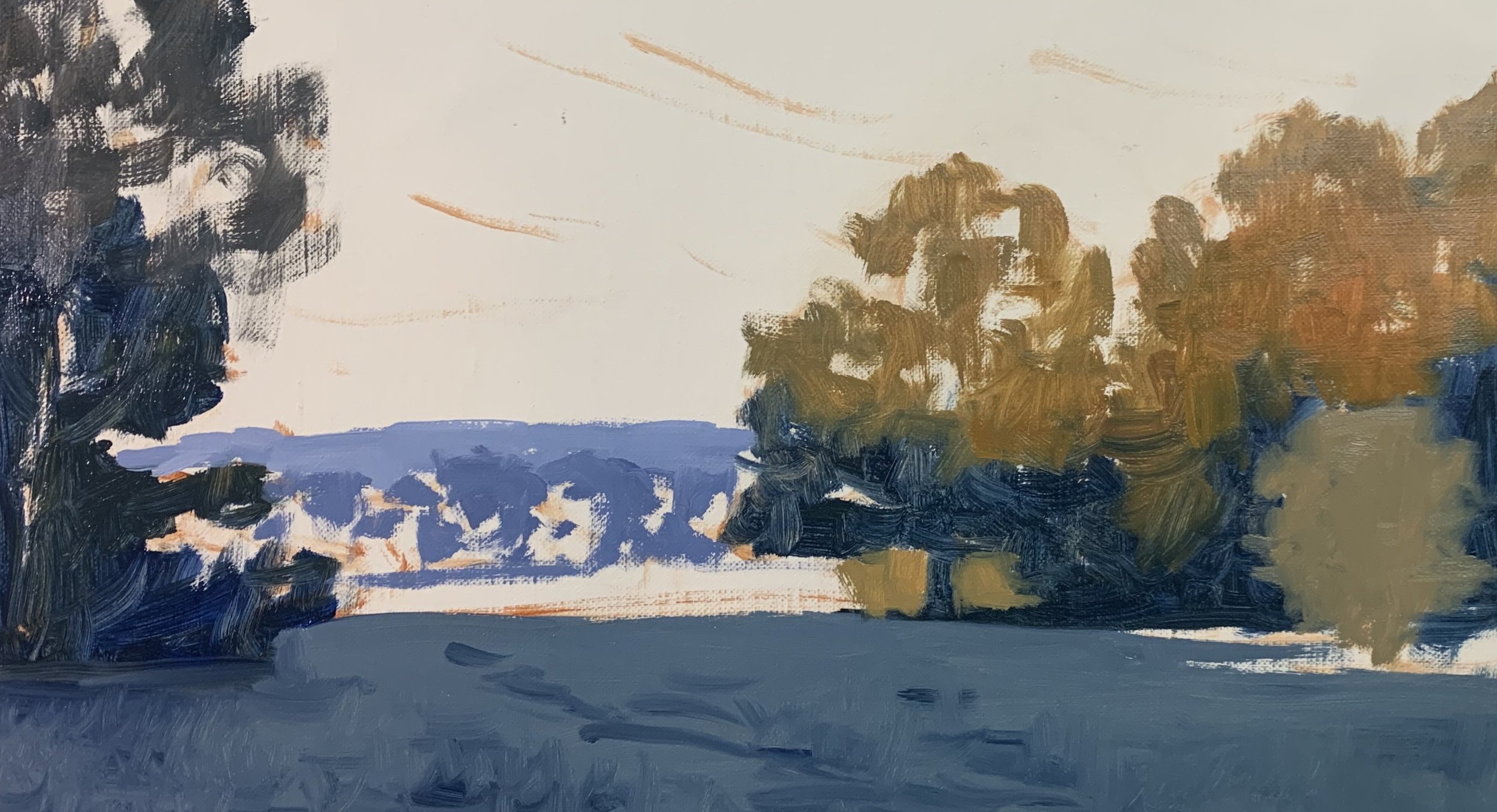
I paint the suggestion of oak tree canopies in the distant fields. These trees are also exhibiting autumn colours but as they are in the distance the colours are not going to be as saturated so it is important to keep this in mind so they sit back in the landscape. I use a mix of yellow ochre, ultramarine blue and titanium white. This is a low chroma colour I have mixed here.
The distant grass is a mix of ultramarine blue, yellow ochre and titanium white. I have used much more titanium white in my mix.
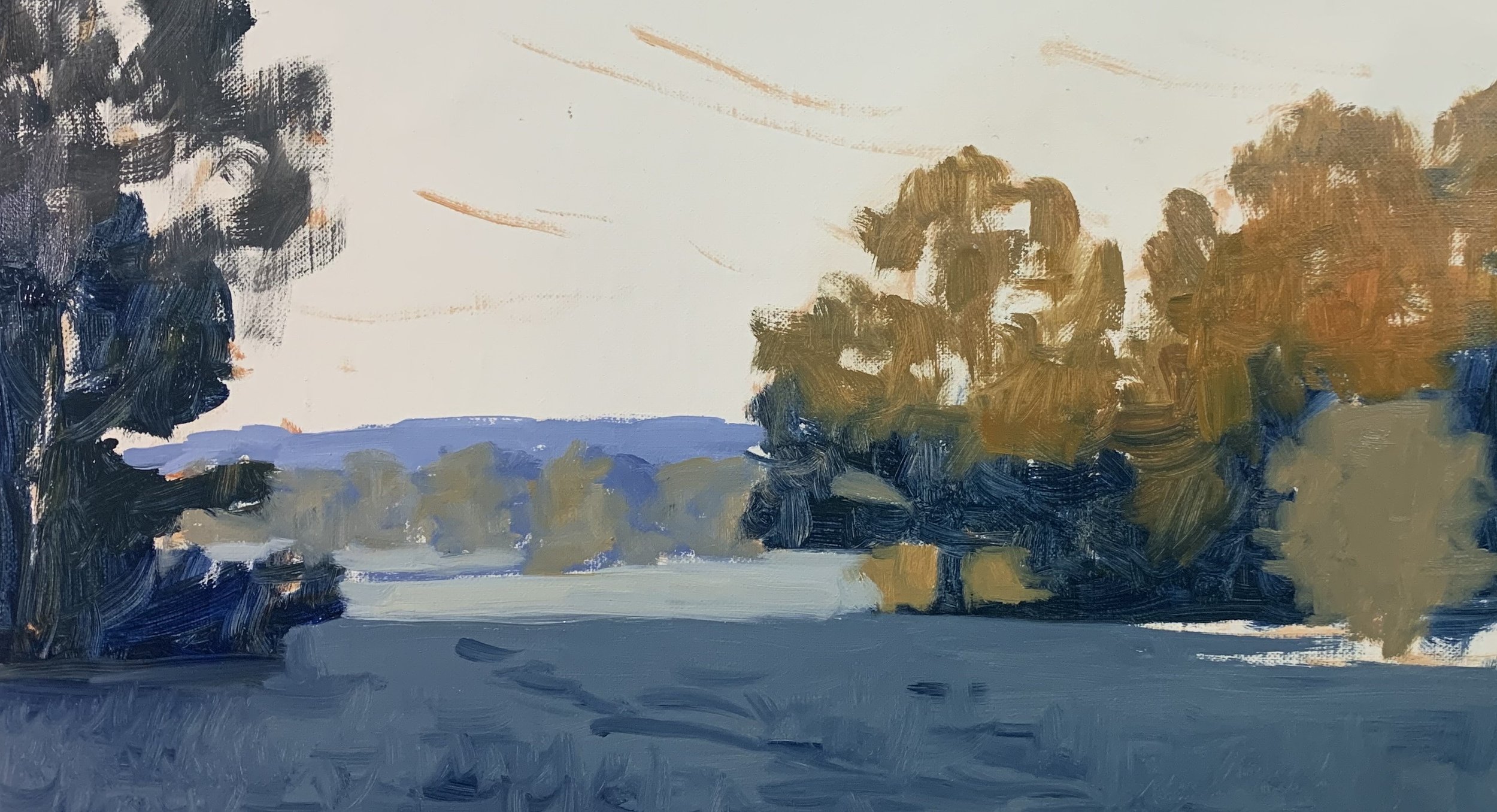
I paint the sky using a mix of ultramarine blue, a little phthalo green and titanium white. For the clouds I use a mix of titanium white and a dash of burnt sienna. There is also a small amount of ultramarine blue and alizarin crimson in the distant clouds.
I mark out the suggestion of a network of stems and branches in the trees using a mix of ultramarine blue and a little yellow ochre.
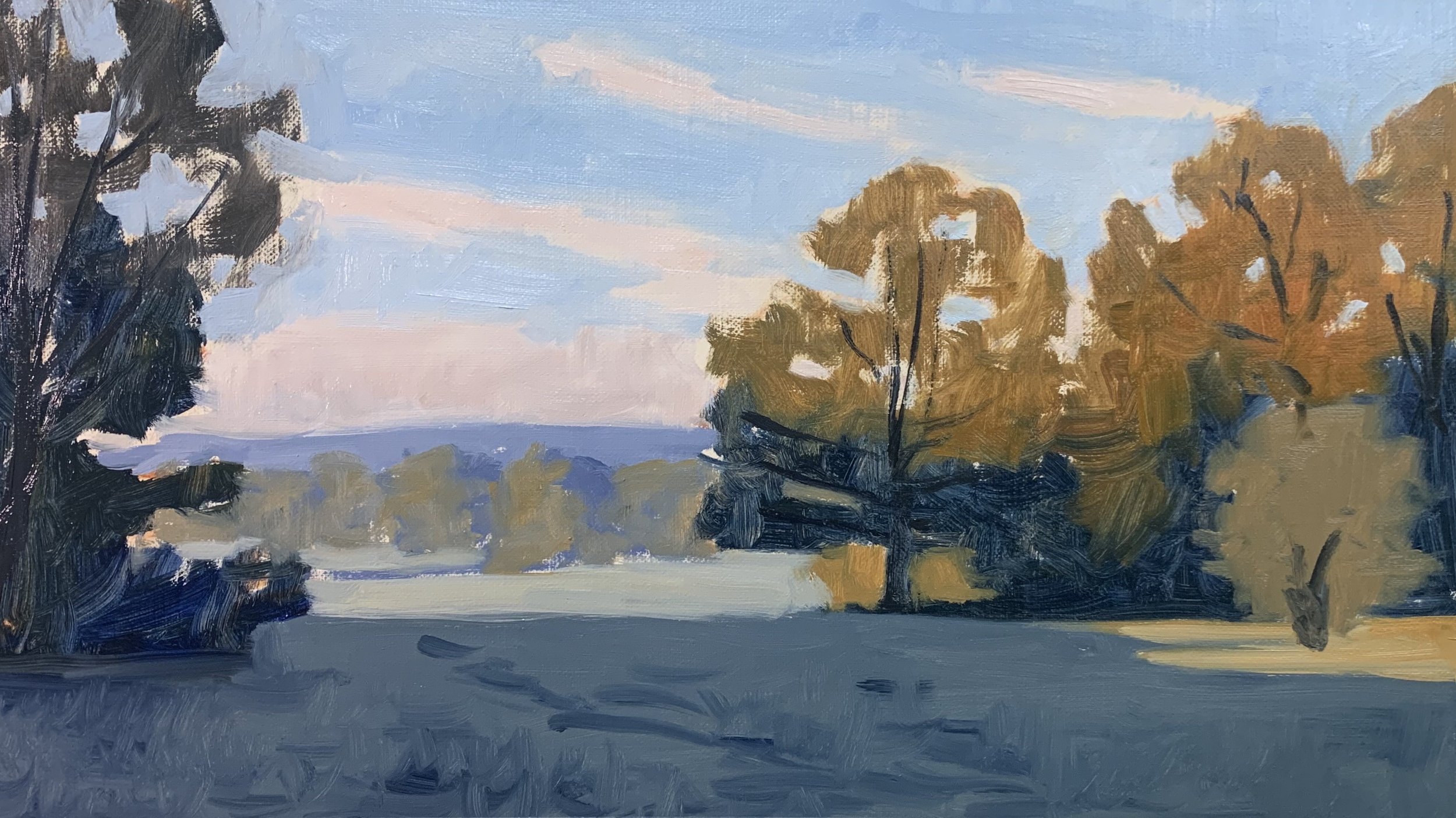
I finish the blocking-in stage by restating the dark values in the tree shadows and distant shadows as well as tidying up the painting overall. At this stage I want to make sure the colours and values are working and that I have plenty of room to add some details and lighter tones within the various elements in the painting. I save my lightest values for the end of the painting. I left the painting to dry and then came back to it a few days later.
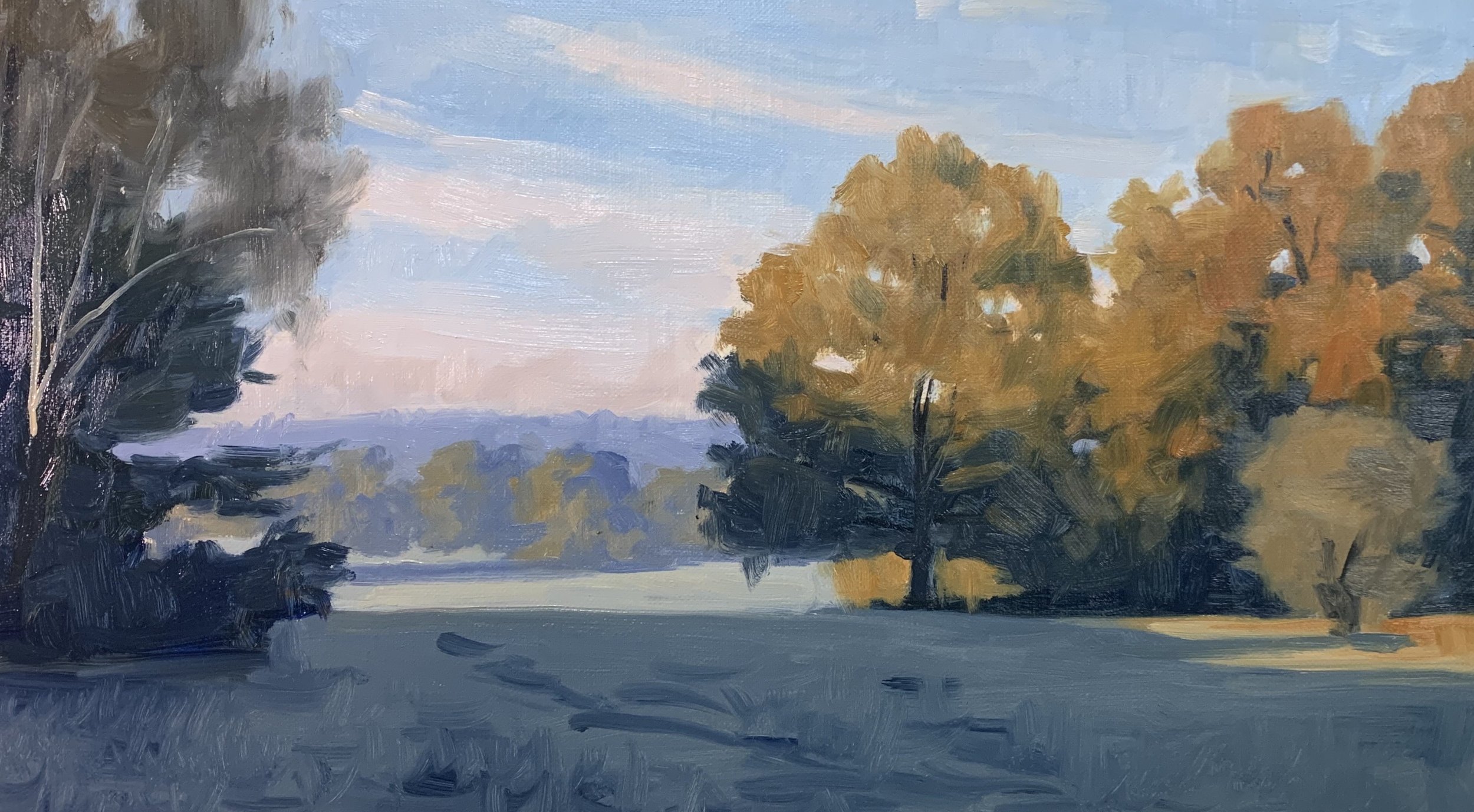
Stage 2 – Adding Details, Modelling and Refining the Painting
The painting is dry and this is where I spent time adding details mainly to the tree canopies and grass in the foreground. The painting is not overly detailed but just enough to make it look more detailed than it actually is.
I have generally used the same colour mixes that I used during the blocking-in stage but used lighter tones in some of my colours especially in the oak trees and this helps to communicate rounded tree canopies. I paint sky holes in the tree canopies to make them look more realistic and natural. I have also been using smaller brushes for the tree foliage, mainly No.3 filbert brushes.
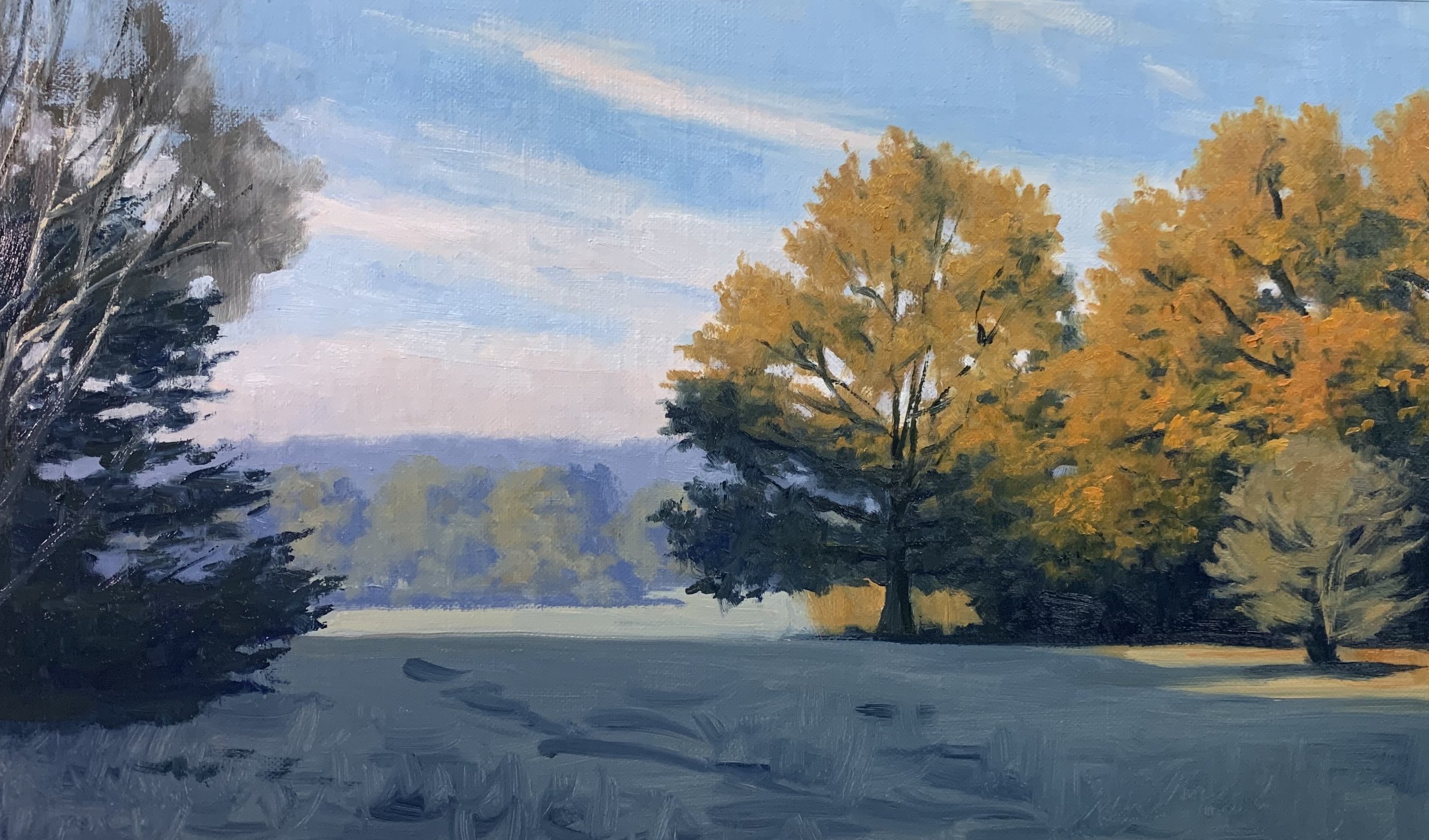
Stage 3 – Final Details
I finished this painting by adding some highlight to the oak trees, using mostly a mix of yellow ochre, burnt sienna and titanium white. There is also a little cadmium yellow and cadmium red light in places too. I have found that using a 1/4” ‘Ivory’ dagger brush to be a great brush to use for painting subtle highlights to communicate dense clumps of leaves.
I paint the highlights in the stems of the birch tree on the left with a mix of titanium white, burnt sienna and yellow ochre.
I add some reflected light in the frosty grass in the foreground still using a combination of ultramarine blue, yellow ochre and titanium white. I used a No.5 flat brush to add more layers to the grass.

Final Note
I hope you enjoyed this written painting demonstration, however I have only scratched the surface as there is way more to this painting.
